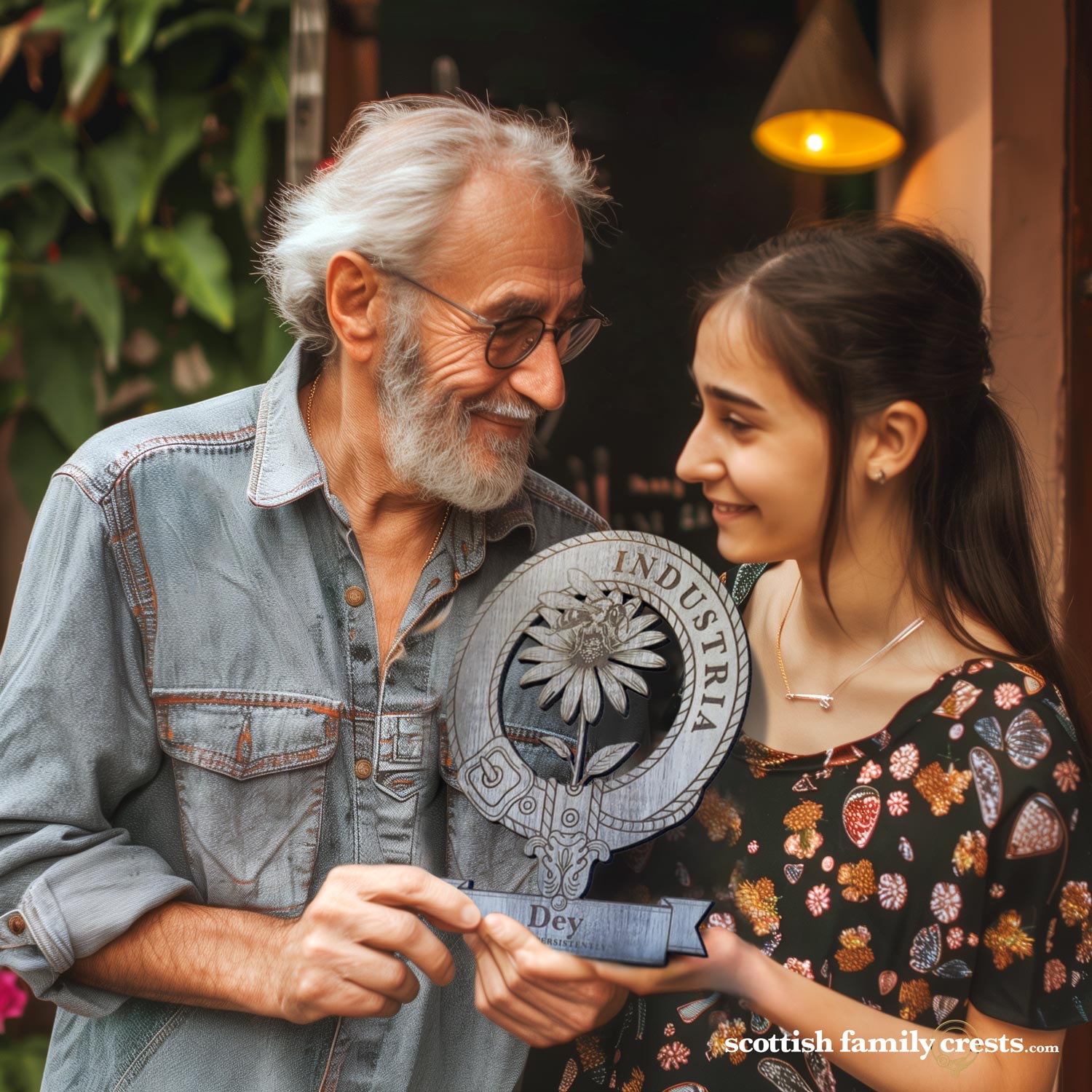Gunn Family History & Ancestry
Let me share with you the fascinating history of your family, the Gunns, passed down through generations. Your family traces its Viking descent back to the marriage of Gunni, grandson of Sweyn Asleifsson, and Ragnhild, a descendant of St. Ragnavald, who played a significant role in the construction of St. Magnus Cathedral in Kirkwall, Orkney. Clan Gunn established its presence in the northern areas of Caithness and Sutherland and developed a longstanding rivalry with Clan Keith.
Over the 15th century, several battles ensued between the Gunns and the Keiths. Notable clashes occurred at Harpsdale in 1426, Tannach Moor in 1438, and Dirlot in 1464. Eventually, a peace agreement was sought, and the two chiefs agreed to meet at the Chapel of St. Tears near Ackergill Castle, the stronghold of the Gunns. Each chief was to bring twelve horses. However, the Keiths arrived with two clansmen on each horse, giving them a two-to-one advantage. In the ensuing encounter, the Gunn chief and four of his sons were slain. Seeking revenge, James Gunn, the surviving son, later killed the Keith chief and his son at Ackergill Castle. This brought the Earls of Caithness and Sutherland into the dispute, resulting in heavy losses on both sides. By 1594, the Gunns were listed as one of the ‘broken clans’ of the North.
In 1978, the Earl of Kintore, Chief of Clan Keith, and Iain Gunn of Banniskirk, Commander of Clan Gunn, signed a Treaty of Friendship at the Chapel, effectively ending a feud that had persisted for five centuries.
The Gunns of Killearnan were connected to the family of Lord Reay, Chief of Clan Mackay, through two marriages. However, in a later generation, their lands were lost due to debt. Notably, Sir William Gunn (1603-1661), a younger son of the Braemor branch known as the ‘Robson Gunns,’ rose to the rank of General in the Holy Roman Empire. Additionally, it is believed that Sir James Gunn accompanied Prince Henry St. Clair of Orkney on his legendary voyage to Estotiland (later known as Nova Scotia) in 1398.
In the realm of arts and accomplishments, Neil Gunn (1891-1971) gained acclaim as an author, writing many successful novels, including “The Silver Darlings” in 1951. Sir James Gunn (1893-1965) became President of the Royal Society of Portrait Painters in 1953. Sir William Gunn (1914-2003) played a pivotal role in developing modern techniques for wool promotion in Australia.
During the 18th and 19th centuries, many members of Clan Gunn, as tenants of the Sutherland estates, emigrated to Canada and New Zealand.
In 1785, the last chief, Morrison Gunn, the 9th Mackeamish, was killed in action without leaving an heir. The Clan had to wait for 230 years until 2015 when Iain Alexander Gunn of Banniskirk was recognized as the new chief of Clan Gunn by The Lord Lyon King of Arms.
Traditionally, Clan Gunn is associated with Caithness, Sutherland, and Orkney. Gunni, believed to be the eponymous ancestor of the clan, arrived in Caithness at the end of the twelfth century when his wife, Ragnhild, inherited estates there from her brother, Harald, Jarl of Orkney, following his demise in battle. Ragnhild had a lineage tracing back to St. Ragnvald, the founder of St. Magnus Cathedral in Kirkwall. The first definitively recorded chief of Clan Gunn was George Gunn, who served as the coroner of Caithness in the fifteenth century. George Gunn was known as ‘Am Braisdeach Mor,’ the ‘great brooch-wearer,’ for the insignia he wore as coroner. However, the patronymic of the chiefs later derived from James Gunn, son of George, known as ‘MacSheumais Chataich’ or ‘son of James of Caithness.’
The Gunns’ historical adversaries were the Keiths, who challenged the Gunn chiefs for political dominance and control of the land from their stronghold at Ackergill Castle. The Gunns launched numerous raids into Keith territory, but suffered defeats in 1438 at the Battle of Tannach Moor and again in 1464 at Dirlot in Strathmore. Both clans agreed to settle their differences and initially intended to engage in a battle of champions, but it resulted in a massacre. During the time of Donald Crottach ‘the hunchback,’ the Gunn seat at Killearnan was destroyed, possibly due to an accident involving gunpowder, and the lands were later lost due to debt.
The Gunns of Killearnan established a new estate at Badenloch, where Captain Alexander Gunn, the 7th Mac Sheumais, sought to uphold the clan’s traditions. Legend has it that in 1736, when his brother was charged with forgery at the Regality Court in Dornoch, the chief defiantly ate the incriminating document while fending off court officials with a chair. During the Jacobite rising of 1745, the Gunns fought on the side of the Hanoverians, not rallying to the exiled Stuarts. With thedecline of clanship as a social institution in the Highlands following the Battle of Culloden, the status of the Gunn chiefs became uncertain. In 1859, the senior line of chiefs came to an end with the passing of George Gunn of Rhives. However, in the mid-twentieth century, efforts began to revive the clan, leading to the establishment of the Clan Gunn Society in 1960.
These are just glimpses into the captivating history of your family, the Gunns, marked by Viking origins, long-standing rivalries, battles, notable figures in literature, art, and military accomplishments.
The Family Crest
Wherever in the world you live, embrace your family heritage and adorn your home with a timeless symbol of your family legacy with our crafted Family Crests.
Family Crest Motto: AUT PAX AUT BELLUM (either peace or war)
$150.00 Original price was: $150.00.$99.00Current price is: $99.00.
Copyright Notice: This artwork is protected by copyright law. Unauthorized reproduction, distribution, or usage of this artwork without explicit permission from ScottishFamilyCrest.com is strictly prohibited.








